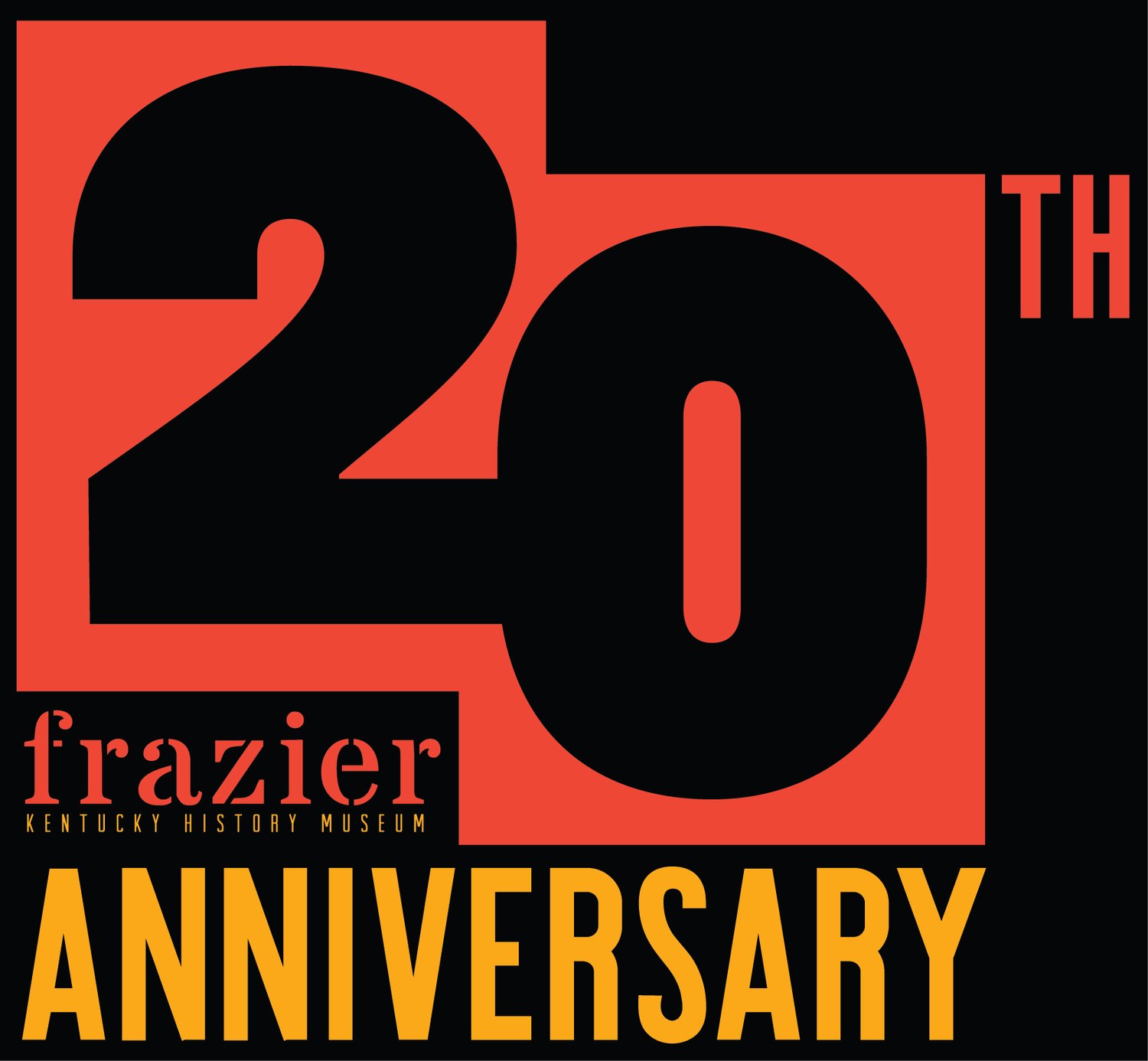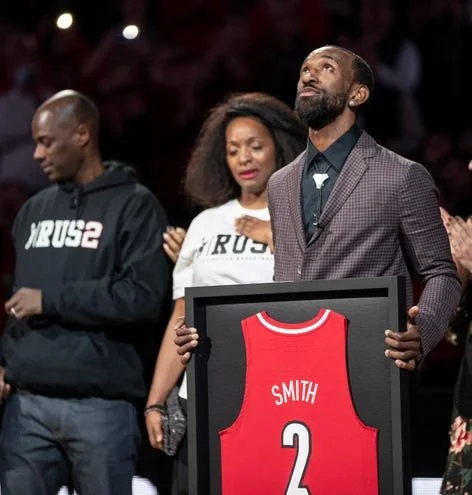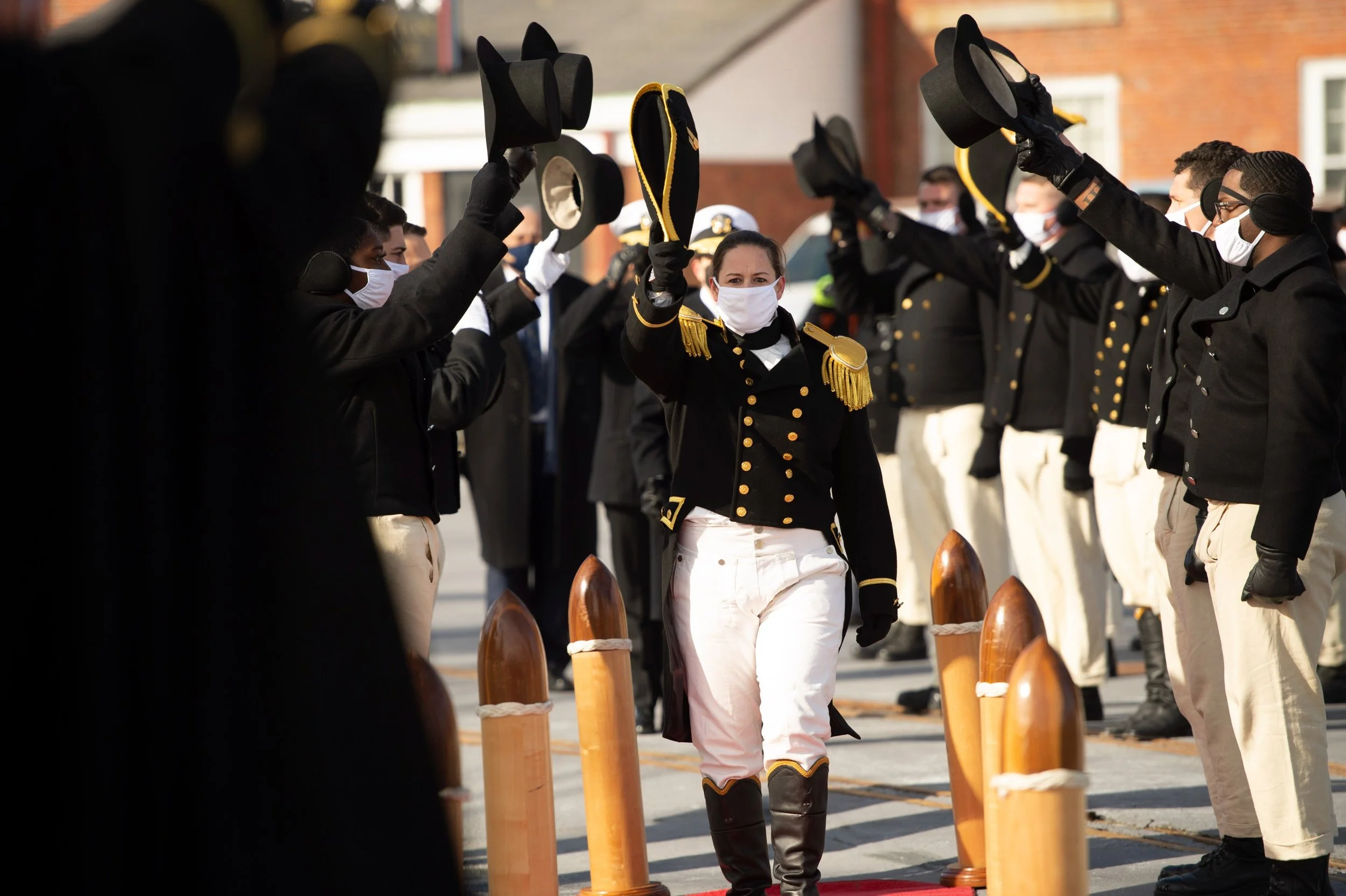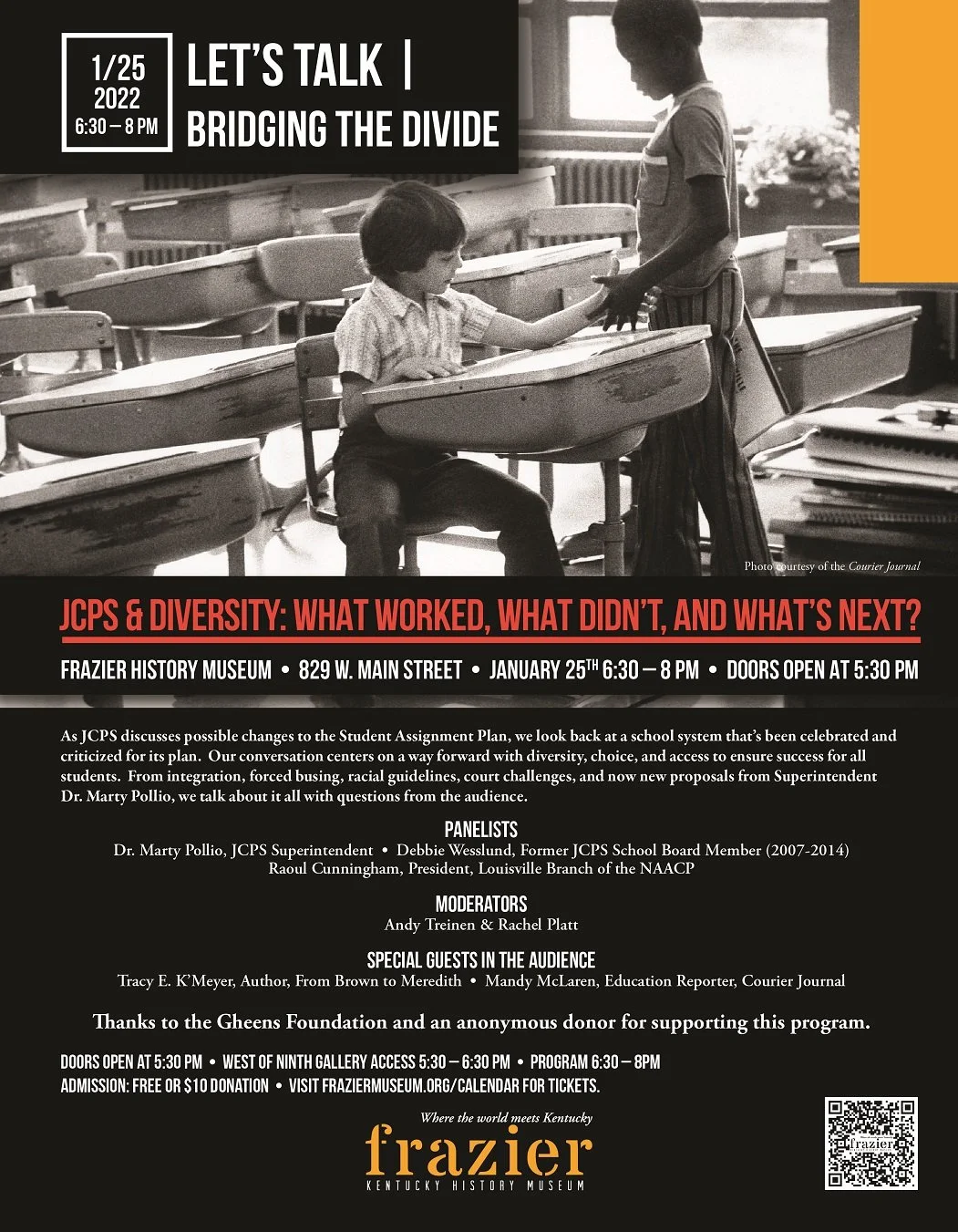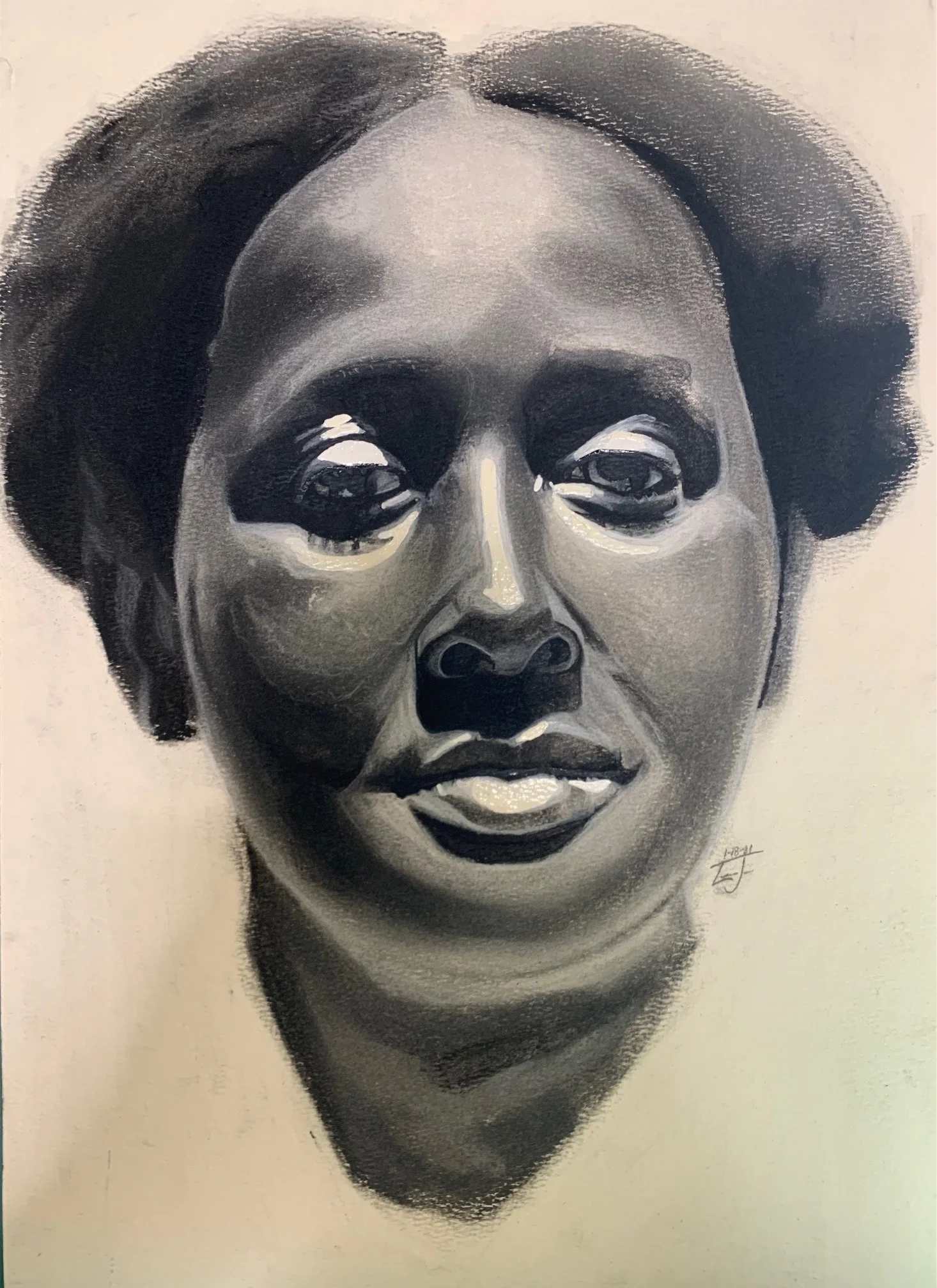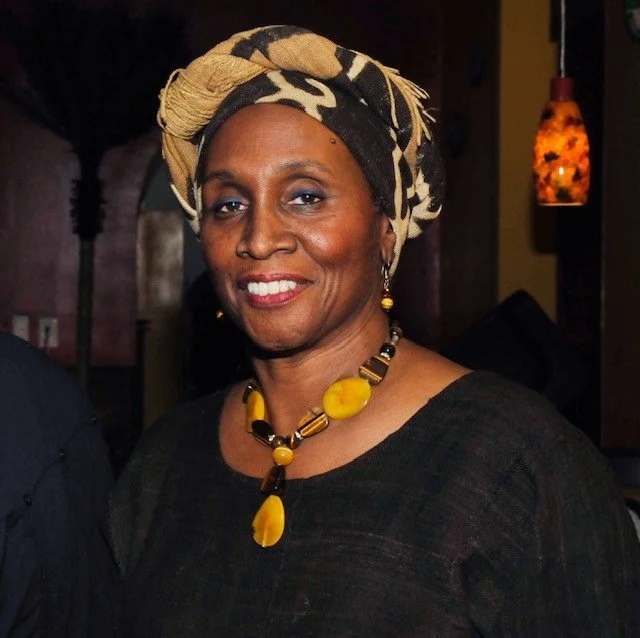Russdiculous Jersey Retired, Paducahan Commands World’s Oldest Warship Still Afloat, Syrian Immigrant-founded Dawahares, and More
“Do you think Russ Smith is in the same category as unicorns and Bigfoot?”
“No.”
“How come?”
“Because Russ Smith is a human.”
“You don’t think he’s got superhuman skills?”
“He’s got basketball skills.”
That cute exchange between a WHAS11 photographer and a young museum visitor — part of a story by then-reporter Rachel Platt, now the Frazier’s director of community engagement — took place July 10, 2013. That was the day University of Louisville men’s basketball player Russ Smith, a.k.a. “Russdiculous,” came to the Frazier to tour Mythic Creatures, a 7,500-square-foot traveling exhibition.
Thanks to those skills of his, basketball and otherwise, Russ, who played for the Cardinals from 2010 to 2014, has been in the news again lately. In December, he launched Mr. and Mrs., a twelve-year-old straight Bourbon whiskey aged in cabernet casks. And on Saturday, at halftime of the U of L men’s basketball game, the school retired his jersey, number two.
Russ Smith’s jersey is retired during halftime of the U of L-Notre Dame men’s basketball game at the KFC Yum! Center in Louisville, January 22, 2022. Credit: Pat McDonogh, Courier Journal.
Russ is now the fifth player so honored in the history of the program, which began in 1911. He joins Charlie Tyra, number eight; Wes Unseld, thirty-one; Darrell Griffith, thirty-five; and Pervis Ellison, forty-two. But, judging by his comments at a press conference Friday, that’s not the best fivesome to which he claims membership.
“Still to this day, there’s guys like Jordan, Iverson, Kobe, and D. Wade . . .” he said. “In my head, I’m the best scorer in the universe. I feel like I’m the best player in the world — the best defender and the best scorer that’s ever touched a basketball.”
In today’s issue of Virtual Frazier Magazine, we highlight two other Kentuckians who’ve made a “Russdiculous” mark in their field — not on the hardwood, but in the harbors and hollows.
First, Mick Sullivan interviews Commander Billie J. Farrell, a Paducah native who, in a change of command ceremony Friday, became the first woman to command the frigate USS Constitution. Launched in 1797, Constitution — which earned the nickname Old Ironsides during the War of 1812, when British cannonballs were seen bouncing off the ship’s wooden hull — is the world’s oldest warship still afloat.
Next, Tyler Horne explores the life and work of Serur Dawahare, a Syrian-American immigrant who, by way of New York and Virginia, came to Eastern Kentucky in 1907 to peddle his wares at coal camps. He, his wife, and their eleven children went on to found and operate a chain of clothing stores with locations in two dozen communities throughout the Commonwealth.
At the Frazier, we’re keen on Kentuckians — whether they’re a Louisville basketball player, a Paducah Naval officer, or a Neon entrepreneur — whose stories we can share with you.
Thank you for reading.
Simon Meiners
Communications & Research Specialist
Frazier History Museum
This Week in the Museum
Video: Paducah-native Commander Billie J. Farrell on Old Ironsides
Commander Billie J. Farrell renders a salute as she passes through Honor Side Boys for USS Constitution’s change of command in the Charlestown neighborhood of Boston, Massachusetts, January 21, 2022. Credit: Petty Officer 3rd Class Alec Kramer, U.S. Naval Institute.
On Friday, January 21, Commander Billie J. Farrell, a native of Paducah, Kentucky, became the first woman to lead the crew of the USS Constitution. Known as Old Ironsides thanks to its resilience during the War of 1812, the USS Constitution is the oldest still-functioning battleship in the world.
Commander Farrell was gracious enough to talk with me in advance of the historic ceremony. Among other things, we discussed her life in Kentucky and a remarkable picture taken in Boston in 1998. If you ever find yourself in Boston, a visit to the USS Constitution is essential — especially now that there’s a Kentucky tie!
Mick Sullivan
Curator of Guest Experience
Curator’s Corner: Syrian Immigrant-founded Chain Dawahares, 1907 – 2008
In this week’s edition of Curator’s Corner, curatorial assistant Tyler Horne explores the story of Serur Dawahare. A Syrian immigrant, Serur in 1907 came to Kentucky where he and his family established a chain of clothing stores with locations in Neon, Whitesburg, and over two dozen other communities. For more on the Dawahares and other immigrant families in Kentucky, visit “The Commonwealth: Divided We Fall,” opening in the Frazier’s 2 South gallery in May. — Simon Meiners, Communications & Research Specialist
As part of the upcoming exhibition The Commonwealth: Divided We Fall, curator Amanda Briede asked me to handle some preliminary research into Kentucky’s immigrant stories. It’s always been a personal interest of mine: My family is made up of immigrants from all over the world, so doing a deep dive into the experience of immigrants has been a pleasure.
The Dawahare family in front of their first store, located in Neon, Kentucky, 1917. Serur Dawahare is standing at the far left. Credit: Faris and Yamna Naff Arab-American Collection Archives Center, National Museum of American History.
The story of Kentucky has usually been one about settlers, not immigrants. The classic images of Daniel Boone bravely traversing the Cumberland Gap to find fertile lands for himself and his family are ingrained into our state’s history. Equally impressive are the people who traveled across the oceans to find their new home in America, whose search led them westward down riverboats on the Ohio to live in a country far from their birthplaces.
Of the many stories I’ve encountered that capture the imagination, few are as memorable as the story of Serur Dawahare, who settled in Eastern Kentucky in the early twentieth century. Born to a Christian family near Damascus in Ottoman Syria in 1888, Serur came to America to escape religious persecution. As a poor recent immigrant with little education and unable to speak English, conditions were tough. Serur took a job in a New York City sweatshop making shoes. There, he met Selma Cury, whom he married. Selma’s brother suggested the young couple might have better financial prospects in Kentucky, where new coal mines were opening.
Soon after, in 1907, the Dawahares packed up their lives and moved to East Jenkins, Kentucky. Serur, like many merchants at the time, worked as a wandering salesman, traveling on foot from coal camp to coal camp with his wares strapped to his back. Toting everything from buttons to fabrics and household supplies, he served the communities of Eastern Kentucky well. After a number of years, in 1917, he and Selma had saved enough money to open a small storefront in Neon, Kentucky.
During his life, Serur taught himself to read, write, and keep his own books. The small country store he ran in Neon grew to four successful retail clothing stores he, Selma, and their eleven children owned and operated. Dawahares grew to become a chain of thirty stores in four states, remaining a family-owned business spanning four generations of Serur’s descendants for its 101-year history. By the time the chain filed bankruptcy and liquidated all its stores in 2008, it had long since become a fixture in communities throughout Eastern Kentucky, known for its charity work, community leadership, and fair prices.
When thinking about Kentucky history during the early 1900s, many people think of white coal workers living in a holler, and not the immigrant from Syria living right alongside them. But it’s important to remember and acknowledge people like Serur Dawahare who lived alongside those coal miners, who were valued and respected members of their communities. People of different backgrounds and from many places have always been there, in every story, bringing their own different perspectives and worldviews to shape the areas they live in.
In my view, the world, and our Commonwealth, has always been better for it.
Sources
Ward, Joe. “The Dawahares: The American Dream Come True.” Courier Journal. August 17, 1980: Accent 1, 10. Print.
Ward, Karla. “Clothing the Commonwealth: Dawahares Celebrates 100 Years.” The Lexington Herald-Leader. September 24, 2007 (Bluegrass Edition): A1, A8. Print.
Jordan, Jim. “Dawahare’s to Close All Stores.” The Lexington Herald-Leader. July 4, 2008: A1, A7. Print.
Mountain Eagle Staff. “‘Go Back Where You Came From!’” The Mountain Eagle. July 17, 2019.
Tyler Horne
Curatorial Assistant
Museum Store: Off the Grid for National Puzzle Day
Selection of jigsaw puzzles sold in the Frazier’s Museum Store, January 21, 2022
Saturday, January 29, is National Puzzle Day, a day to celebrate the activities that exercise our brains. KenKen, Candy Crush, and Wordle — the popular word game launched in October, the one whose emoji grids your friends keep Tweeting — all have their charm. But as a history museum, we recommend dusting off a tactile classic: jigsaw puzzles. The Frazier’s Museum Store stocks a selection of nifty jigsaw puzzles, including I Am Cardinal, Cocktails Across America, Well-behaved Women Seldom Make History, and Corvette Evolution.
Grant to Support Free Programming for Title 1 Schools
Logo of LG&E and KU Foundation
The Frazier Museum education team is excited to announce a 2022 grant award from the LG&E and KU Foundation that will support free programming for Title 1 schools in Kentucky! Funding will cover on-site field trips, outreach performances at schools, virtual field trips, and teacher professional development.
To learn more about program options or make reservations, click here.
Please direct any questions to education@fraziermuseum.org.
Megan Schanie
Manager of School & Teacher Programs
JCPS & Diversity: What are Your Questions?
“Are we there yet?”
It is a question about Jefferson County Public Schools and diversity this community has been asking for decades. I wonder if the answer can ever be a definitive “yes.”
Are we always a work in progress, trying to be the best we can be for all children, trying to strike that chord of diversity?
Superintendent Dr. Marty Pollio is proposing changes to the Student Assignment Plan and Magnet Schools. Will these moves get us closer to being there?
And where exactly is there?
This community has seen mandatory busing and countless changes to the Student Assignment Plan already; but still, the achievement gap continues to widen.
So what is the answer? And what are the questions we should be asking?
One proposal being considered would give middle and high school students living in the West End more choice in terms of where they attend school, including schools closer to home.
How will that impact diversity at schools? And is that the first question we should ask, the second, or the third?
Our conversation tomorrow night at the Frazier will be an important one. We need your voice, and we need your questions. You can attend in person or virtually to ask questions, or you can email me your questions in advance at rplatt@fraziermuseum.org.
Our biggest question — are we there yet? — still hasn’t been answered . . . has it?
Take a look at our panelists, including Dr. Marty Pollio, and please join us.
Rachel Platt
Director of Community Engagement
History All Around Us
History of Elmwood Inn & Fine Tea Company in Boyle County, 1842 – Present
Near the banks of the Chaplin River in Perryville, Kentucky, sits a beautiful house known as Elmwood. Throughout its 200-year existence, this house has had many purposes, serving as a hospital, an academy, a restaurant, a tearoom, and, of course, a home. Read below to journey through its significant moments, dating from the Civil War to the present day, when its legacy lives on through the Elmwood Inn Fine Tea Company.
Exterior of the Elmwood Inn in Perryville, Kentucky, January 12, 2009. Credit: Teamaestro, Wikimedia Commons.
1842. The Elmwood House was built by Perryville general store owner John Allen Burton for his family after their previous home burned down. The new house featured elegant molding and a cherry wood staircase, making it one of the finest homes in the county. Its name comes from the elm trees that stretch from the house to the Chaplin River.
1862. After the Battle of Perryville, October 8, 1862, the Burton home was used as a field hospital for wounded soldiers. If walls could talk, the house would undoubtedly tell unpleasant stories of surgical operations performed in the dining room and straw-covered floors used to absorb any blood. Many of the soldiers who recovered here were rebels, left behind when the defeated Confederate army retreated in haste.
Pages of A Year of Teas at the Elmwood Inn (1994) by Shelley Richardson and Bruce Richardson, January 18, 2022. Credit: Hayley Rankin.
1897. The house was sold to Sarah and Blanche Griffing for $1,500. Sarah and her brother, Professor Thomas Poynter, were both educators who taught at a local girls school. They turned the house into a successful boarding school called the Elmwood Academy that operated until their deaths.
1924. Sarah’s daughter, Blanche Griffing, taught piano lessons and rented out rooms in the house to support herself until her own death in 1956.
1956 – 74. The house fell into disrepair and changed ownership several times.
1974. The Elmwood was placed on the National Register of Historic Places and made an official Kentucky Landmark. After the addition of a new kitchen and a second floor banquet room, the house became the Elmwood Inn. Notable figures such as President Ronald Reagan and Harland “Colonel” Sanders visited the Inn to experience the fine Southern cooking and hospitality.
1989. The Inn’s restaurant closed, forcing the owners to auction off the contents of the house.
1990. Bruce and Shelley Richardson purchased and restored the home to turn it into a bed and breakfast. The Richardsons, including their son Benjamin, lived there while hosting guests for Civil War re-enactments and formal afternoon tea.
2004. The Richardson family closed the Elmwood Inn tea room to focus on the growing success of their wholesale tea business and publishing company. The Elmwood house returned to existence as a quiet, private residence.
Teas produced by Elmwood Inn Fine Teas and available for purchase online. Credit: Elmwood Inn Fine Teas.
Today, the Elmwood Inn Fine Teas Company produces a wide variety of tea, tea wares, and recipe books published by the Benjamin Press. Their store is also located in Boyle County — in nearby Danville — and online. One publication, A Year of Teas at the Elmwood Inn, lists a full menu of afternoon tea recipes for each month of the year. The book was published while the tea room was still operating, so it includes many pictures of the Elmwood Inn and the delicious baked goods.
Here is the recipe for January’s Scottish Dundee Cake with a photo of my own attempt. I followed the instructions to a T, but used Bourbon instead of brandy and omitted the mixed candied fruits. If you’d like to try for yourself, I would also advise using a spring form cake pan with wax paper lining all the way around the sides of the cake and adjusting both the temperature and bake time depending on how strong your oven is. Some recipes suggest 300 F instead of 350 F.
Detail of January Afternoon Tea and Scottish Dundee Cake recipes published in A Year of Teas at the Elmwood Inn (1994), January 18, 2022. Credit: Hayley Rankin.
Recipe for Scottish Dundee Cake
2 cups all-purpose flour
1 ½ tsp. baking powder
¾ cup butter, room temperature
¾ cup sugar
3 eggs, room temperature
½ cup orange marmalade
16 oz. mixed candied fruits
1 cup golden raisins
½ cup blanched almonds (slices or whole)
1 egg white, slightly beaten
¼ cup orange juice flavored with brandy
Preheat oven to 350 F. Grease a 2-in. deep, 8-in. cake pan and line with wax paper. Sift together flour and baking powder. In a separate bowl, cream butter and sugar until light and fluffy. Add eggs one at a time, then marmalade. Gently fold in flour mixture. Stir in dried fruits and orange juice. Mix well and pour into cake pan. Arrange almonds in circular pattern on top and brush with the egg white. Bake for 1 ½ hours. Reduce oven temperature to 300 F and bake for an additional 45 minutes or until toothpick comes out clean. Cool for 1 hour.
A slice of Scottish Dundee Cake and a cup of January Afternoon Tea, January 18, 2022. Credit: Hayley Rankin.
Grab a cup of Elmwood Inn Fine Tea and enjoy!
Hayley Rankin
Manager of Collection Impact
Bridging the Divide
We wanted to update you on a story we shared last year, an interview with Dr. Renee Campbell about her grandmother, Ada Doss Campbell (1897 – 1940). Dr. Campbell never met Ada, but she has worked tirelessly to give “a voice” to the woman so many either didn’t see or didn’t help when she was ill. Thanks to Dr. Campbell, the Kentucky legislature has honored Ada, a plaque commemorating her hangs at Central State Hospital, where she passed away, and now, there is a memorial scholarship fund in her name at Kentucky State University. The scholarship fund is for students who study social work, the field to which Dr. Campbell has dedicated her life. Dr. Campbell will share her grandmother’s story at “Racial Reckoning: Health” — the fourth and final installment of a series the Frazier, the Ali Center, and the Courier Journal have organized — on Thursday, January 27, from 7 to 8 p.m. The program is online only. For more on Ada, the scholarship fund, and how you can contribute, here’s Dr. Campbell. — Rachel Platt, Director of Community Engagement
My father always talked about the mother he didn’t know. As a child, I heard my uncle and him talk about it with sadness. I knew they were raised by Aunt Lottie and Uncle Will, their father’s brother and wife. When I became an adult, and my father suddenly passed in 1982 at the age of forty-nine, I was old enough to realize how it felt to not have answers about absent parents. Years later, I decided to conduct my own research.
Painting of Ada Doss Campbell by Levernist Bryant, 2021. The painting is adapted from a negative of a photograph Dr. Campbell found in Ada’s medical chart. Credit: Dr. Renee Campbell.
With money from the Kentucky Foundation for Women, I started my research beginning at the Jefferson County Clerk’s Office. I discovered that in 1935, Mrs. Ada Doss Campbell was transferred from the county jail to Lakeland Insane Asylum, now Central State Hospital. She stayed there until her death in 1940. Upon reading further, I could not believe what I learned about her stay. What I discovered from researching her medical records horrified me. I was shocked that a medical professional would reveal in a medical chart that a patient of theirs died in their institution, in the early stages of their illness, from “professional neglect in the early stages of her illness.” My grandmother had no rights as a woman, an African American, or a person — she was voiceless and not given the best care possible.
This discovery inspired me to contact a Central State Hospital social worker who later organized a meeting with the Commissioner of the Kentucky Department of Behavioral Health, Developmental and Intellectual Disabilities; and other Central State leaders and executives. During the meeting, I revealed my findings with all the aforementioned persons present. One of my requests on behalf of my grandmother was that Central State provide financial support for an educational college scholarship in her honor, which they were unable to do; but they did hang a plaque in her honor inside their chapel.
After the meeting, I began to tell my grandmother’s story and inform individuals about my intention and vision to establish a scholarship for students who attend Kentucky State University and study social work. The scholarship journey began, and the program was born: Kentucky State University provided a letter agreeing to both establish the fund at the University and match any donated funds. The Mrs. Ada Doss Campbell Scholarship fund was further fueled by three humanitarian souls, the “Mrs. Ada Doss Campbell Dream Team” — Reba Cobb, Jane Emke, and Marsha Weinstein. In early December, we spearheaded the Mrs. Ada Doss Campbell Scholarship fund at the Community Foundation of Louisville. Individuals who would like to donate can do so by visiting Community Foundation of Louisville’s website.
Dr. Renee Campbell
Educator/Humanitarian/Social Worker
Guest Contributor
Membership
A Frazier History Museum Membership: What are the Benefits?
Why should someone get a membership to the Frazier?
At the very core of ALL membership levels: FREE Admission all year long! Along with a 10% discount in our Museum Store and discounted parking.
With the purchase of our base membership level, an Individual membership at $20 — if you visited at least once a month, you would save almost $150 simply on admission alone! And that’s just ONE of the benefits . . .
What about the others?
Calling all parents!
Did you know that with the purchase of our Family membership level at $50, on top of the free admission benefits, you receive discounted registration to education camps for your children? Yup, you sure do!
What about those social couples and families?
Did you know that with the purchase of our Contributor membership level at $106, along with the free admission benefits and discounted registration to education camps, these members receive invitations to member exclusive events and VIP Previews?
Keep these events in mind when you pick out your membership level.
Be on the lookout for our newest exhibition, The Commonwealth: Divided We Fall, coming soon this spring.
So . . . What are the Five Core Benefits of a Frazier Membership?
Free Admission all year long!
10% discount in our Museum Store*
Discounted Parking
Discounted Registration to Education Camps
Invitations to Member Exclusive Events and VIP Previews
*Exclusions apply.
See for yourself: Click here to view the list of membership levels and the full list of benefits that come with.
Want even more benefits!? We don’t blame you! Click here to view the list of our Lewis and Clark Giving Society Levels and the benefits that come with.
Our members know where the best place in town is. Come see for yourself and be a part of where . . .
The World Meets Kentucky!
Come experience more — what are you waiting for?
Become a member of the Frazier today!
Memberships can be purchased online, by mail, in person, or over the phone.
Give us a call at (502) 753-5663.
Amanda Egan
Membership & Database Administrator
